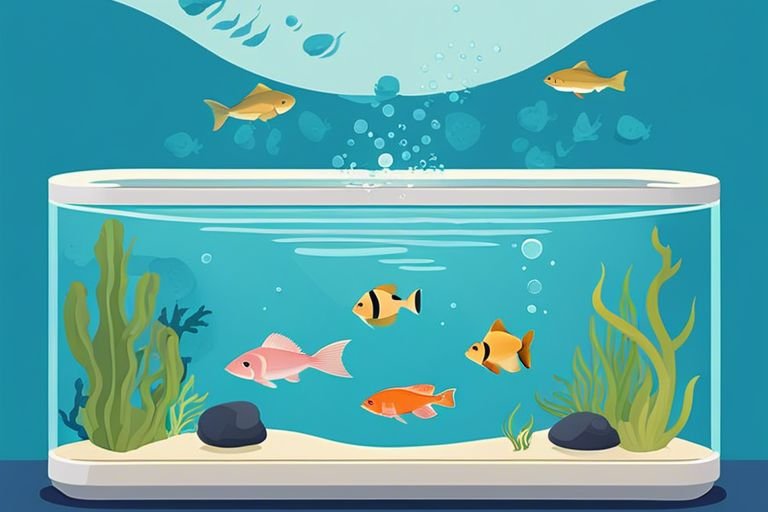Do you know the subtle signs of stress in your Anabas? It’s important to be able to recognize when your fish is feeling overwhelmed in their environment in order to provide effective care and prevent potential health issues. Some common signs of stress in Anabas include erratic swimming behavior, loss of appetite, and faded coloration. Fortunately, there are several ways you can alleviate stress in your Anabas, such as maintaining proper water quality, providing adequate hiding spots, and ensuring a proper diet. In this blog post, we’ll take a closer look at the signs of stress in Anabas and provide you with helpful tips to help alleviate it, ensuring the well-being of your beloved aquatic companion.
Identifying Signs of Stress in Anabas
Before we can address how to alleviate stress in Anabas, it’s important to be able to identify the signs of stress in the first place. Anabas, also known as the climbing perch, can exhibit both behavioral and physical indications of stress, which can help you determine if your fish is in distress.
Behavioral Indicators
When it comes to behavioral indicators of stress in Anabas, there are a few key signs to look out for. If you notice your Anabas hiding more than usual, displaying lethargic behavior, or showing aggression towards other fish in the tank, these could all be signs of stress. Additionally, if your Anabas is refusing food or showing signs of excessive fin clamping, these are also indicators that your fish may be experiencing stress.
Physical Symptoms
It’s also important to pay attention to the physical symptoms of stress in Anabas. If you notice your fish exhibiting abnormal coloration, such as pale or darkened patches, or if you observe any visible sores or lesions on its body, these could all be signs of stress. Additionally, rapid or labored breathing, as well as erratic swimming patterns, can also indicate that your Anabas is under duress.
Factors Contributing to Stress in Anabas
Even though Anabas are hardy and adaptable creatures, they can still experience stress under certain circumstances. Here are some factors that contribute to stress in Anabas:
- Environmental sources
- Biological and social factors
Perceiving and understanding these factors can help you better alleviate stress in your Anabas.
Environmental Sources
Environmental sources like water quality, temperature, and tank size can impact the well-being of your Anabas. Any sudden changes in these environmental factors can cause stress for your fish. It’s important to ensure that their habitat is suitable and stable to prevent stress related to environmental factors.
Biological and Social Factors
Biological and social factors such as aggression from tank mates, breeding, and illness can also lead to stress in Anabas. It’s important to recognize and address any potential issues in your Anabas’ social environment to keep them healthy and free from stress.
- Aggression from tank mates
- Breeding
- Illness
Recognizing and addressing these factors can help you create a more harmonious environment for your Anabas, reducing their stress levels and promoting overall well-being.
Methods for Alleviating Stress in Anabas
Keep in mind that alleviating stress in Anabas is crucial for maintaining their overall well-being. Here are a few methods you can use to help reduce stress and create a healthy environment for your Anabas.
Improving Habitat Conditions
Ensuring that your Anabas has a suitable and well-maintained habitat is essential for minimizing stress. Make sure the water quality is optimal with regular water changes and filtration. Providing ample hiding places and plants can also help reduce stress by offering a sense of security. This will allow your Anabas to retreat and feel safe when it needs to. Additionally, maintaining proper water temperature and oxygen levels are crucial to keep stress at bay.
Stress Reduction Techniques
When you notice signs of stress in your Anabas, it’s important to take action to help them relax. One effective technique is to dim the lights in their tank. Decreased light can help them feel calmer and less exposed. Another technique is to minimize disturbances in their environment. Avoid tapping on the tank or making sudden loud noises that can startle your Anabas. Establishing a routine for feeding, and maintaining a peaceful surrounding can also help reduce stress levels.

Conclusion
Drawing together the signs of stress in Anabas and methods to alleviate it, it is crucial to pay attention to the behavioral changes such as loss of appetite, increased aggression, or hiding. Observing your Anabas closely is key to identifying these signs early on. By providing a suitable environment with proper water conditions, appropriate tank size, and hiding spots, you can help alleviate their stress. Additionally, introducing natural plants and decor can provide a sense of security and comfort for your Anabas. Remember, closely monitoring your Anabas and making necessary adjustments to their environment can contribute to reducing their stress levels and promoting their overall well-being.
FAQ
Q: What are the signs of stress in Anabas?
A: Common signs of stress in Anabas, also known as the climbing perch, include changes in coloration, loss of appetite, increased hiding behavior, and excessive aggressiveness towards tankmates.
Q: How can I alleviate stress in Anabas?
A: To alleviate stress in Anabas, ensure that the aquarium environment is well-maintained with proper filtration, adequate water quality, and appropriate tank mates. Additionally, provide plenty of hiding places, maintain a stable feeding schedule, and perform regular water changes to create a stress-free environment.
Q: Are there any specific behaviors I should look out for to identify stress in Anabas?
A: Yes, some specific behaviors that indicate stress in Anabas include erratic swimming patterns, gasping at the water’s surface, and excessive fin clamping. It’s important to monitor these behaviors closely and take action to address any signs of stress promptly.